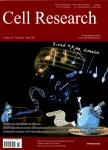版权所有:内蒙古大学图书馆 技术提供:维普资讯• 智图
内蒙古自治区呼和浩特市赛罕区大学西街235号 邮编: 010021

作者机构:AIDS Research Department Institute of Microbiology and Epidemiology Academy of Military Medical Science Beijing 100071 China Center of Disease Prevention and Control Henan Province China National Center for AIDS/STD Control and Prevention China CDC Beijing China
出 版 物:《细胞研究(英文版)》 (CELL RESEARCH)
年 卷 期:2005年第15卷第11期
页 面:843-849页
核心收录:
学科分类:0710[理学-生物学] 1004[医学-公共卫生与预防医学(可授医学、理学学位)] 07[理学] 071009[理学-细胞生物学] 09[农学] 100401[医学-流行病与卫生统计学] 0901[农学-作物学] 090102[农学-作物遗传育种] 10[医学]
基 金:Grants from Ministry of Health National HIV drug Resistance Surveillance Network of China
主 题:AIDS drug resistance adherence antiretroviral therapy
摘 要:To understand the prevalence and evolution of drug resistant HIV strains in Henan China after the implementation of free antiretroviral therapy for AIDS patients. 45 drug naive AIDS patients, 118 AIDS patients who received three months antiretroviral therapy and 124 AIDS patients who received six months antiretroviral treatment were recruited in the southern part of Henan province. Information on general condition, antiretroviral medicines, adherence and clinical syndromes were collected by face to face interview. Meanwhile, 14ml EDTA anticoagulant blood was drawn. CD4/CD8 T cell count, viral load and genotypic drug resistance were tested. The rates of clinical improvement were 55.1% and 50.8% respectively three months and six months after antiretroviral therapy. The mean CD4 cell count after antiretroviral therapy was significantly higher than in drug naive patients. The prevalence rate of drug resistant HIV strains were 13.9%, 45.4% and 62.7% in drug naive patients, three month treatment patients and six month treatment patients, *** number of resistance mutation codons and the frequency of mutations increased significantly with continued antiretroviral therapy. The mutation sites were primarily at the 103, 106 and 215 codons in the three-month treatment group and they increased to 15 codon mutations in the six-month treatment group. From this result, the evolution of drug resistant strains was inferred to begin with the high level NNRTI resistant strain, and then develop low level resistant strains to NRTIs. The HIV strains with high level resistance to NVP and low level resistance to AZT and DDI were highly prevalent because of the AZT+DDI+NVP combination therapy. These HIV strains were also cross resistant to DLV, EFV, DDC and D4T. Poor adherence to therapy was believed to be the main reason for the emergence and prevalence of drug resistant HIV strains. The prevalence of drug resistant HIV strains was increased with the continuation of antiretrovi